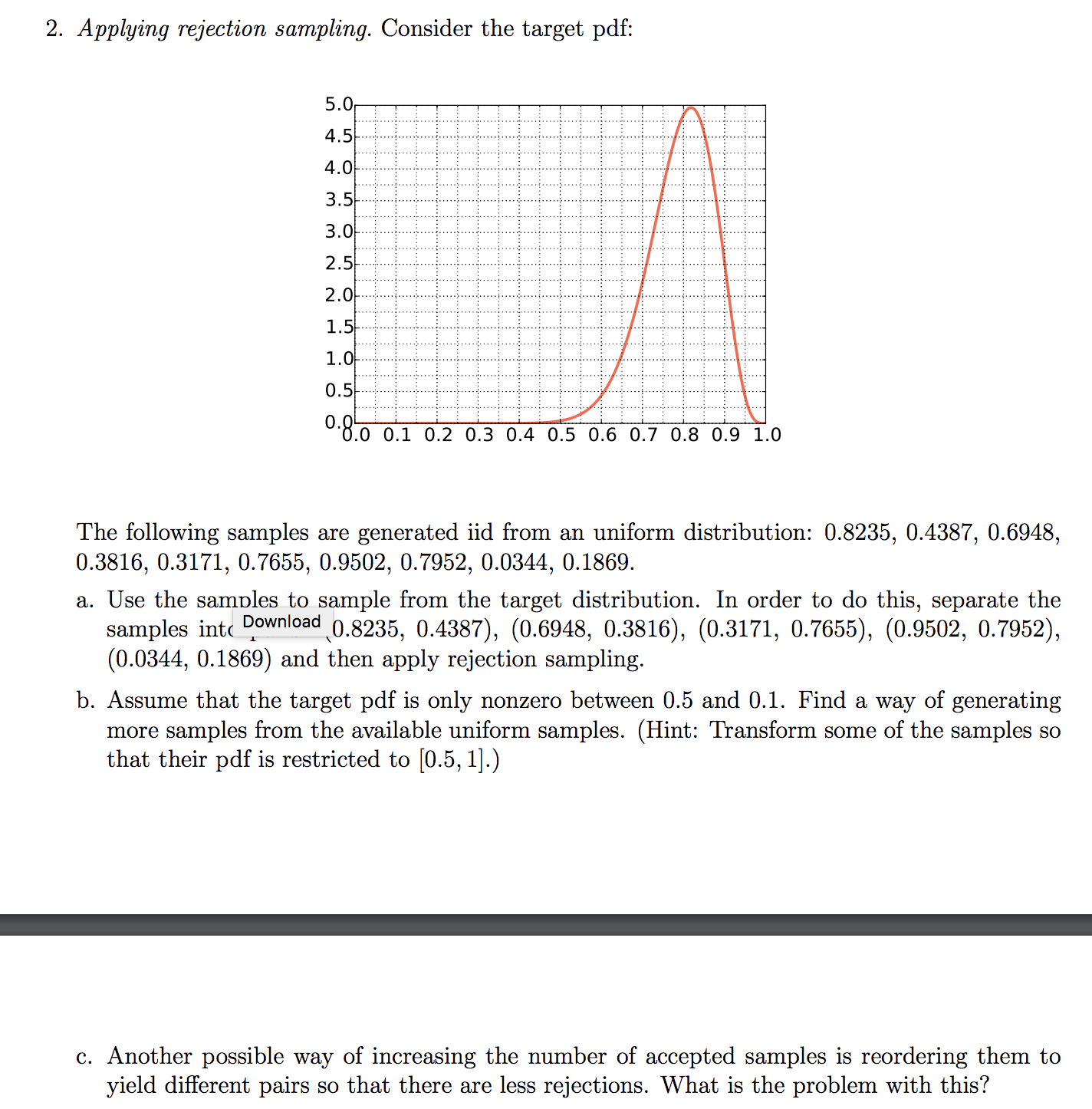Answered step by step
Verified Expert Solution
Question
1 Approved Answer
Please see the attaching images about the question. 2. Applying rejection sampling. Consider the target pdf: 5'0 1 . : : : . : .
Please see the attaching images about the question.



Step by Step Solution
There are 3 Steps involved in it
Step: 1

Get Instant Access to Expert-Tailored Solutions
See step-by-step solutions with expert insights and AI powered tools for academic success
Step: 2

Step: 3

Ace Your Homework with AI
Get the answers you need in no time with our AI-driven, step-by-step assistance
Get Started


